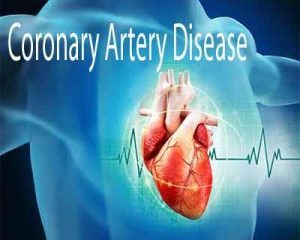- Home
- Editorial
- News
- Practice Guidelines
- Anesthesiology Guidelines
- Cancer Guidelines
- Cardiac Sciences Guidelines
- Critical Care Guidelines
- Dentistry Guidelines
- Dermatology Guidelines
- Diabetes and Endo Guidelines
- Diagnostics Guidelines
- ENT Guidelines
- Featured Practice Guidelines
- Gastroenterology Guidelines
- Geriatrics Guidelines
- Medicine Guidelines
- Nephrology Guidelines
- Neurosciences Guidelines
- Obs and Gynae Guidelines
- Ophthalmology Guidelines
- Orthopaedics Guidelines
- Paediatrics Guidelines
- Psychiatry Guidelines
- Pulmonology Guidelines
- Radiology Guidelines
- Surgery Guidelines
- Urology Guidelines
CT angiography as effective as invasive coronary angiography

Coronary CT angiography, a less invasive and cost-saving technique, is non-inferior to the invasive coronary angiography in diagnostic value to evaluate coronary disease, according to findings of the SYNTAX III REVOLUTION trial published in the European Heart Journal.
Coronary angiography is the gold standard that helps in therapeutic decision making in coronary artery disease. Coronary CT angiography is also a valuable aid to assess coronary heart disease but is not widely used as the invasive coronary angiography owing to some limitations.
The SYNTAX III Revolution trial for the first time randomized two separate Heart Teams (in six participating international centres) and not the patients, to quantify the anatomical complexity by using the SYNTAX score in patients with known de novo left main or three-vessel CAD in six participating international centres using information obtained from either coronary CTA or conventional angiography.
The primary goal was to assess the treatment decision, whether to decide on percutaneous coronary intervention (PCI), coronary artery bypass grafting (CABG) or equipoise between CABG and PCI. The primary endpoint of this study was agreement between the two heart teams on the revascularization strategy.
Heart Team A had to make their decision on whether to perform revascularization with either PCI or surgery using information received strictly from the non-invasive multislice coronary computed tomography angiography (MSCT) from a GE Revolution multislice CT scan along with fractional flow reserve (FFR) CT assessment (HeartFlow).
Heart Team B also needed to make the same decision but using only conventional angiography.
Also Read: Delhi Doctors adopt new technique-perform angiography via finger artery
Key Findings:
- No significant differences in the number of coronary stenoses > 50%, and SYNTAX score calculated by using coronary CTA and conventional angiography were observed (1108 vs 1073 and 33.9 ± 12.0 vs. 30.3 ± 12.2, respectively).
- CABG was recommended in 28% of patients by coronary CTA and in 26% of patients by invasive coronary angiography.
- Equipoise CABG or PCI was suggested in 106 patients, with no difference between CTA and coronary angiography. Overall, the heart teams agreed on the coronary segments to be revascularized in 81.1% of cases.
- FFRCT was available in 868 of the 1108 lesions and identified no flow-limiting stenosis in 116 lesions in 34% of the patients; thus, changing the treatment decision in 7% of the patients (the surgical procedure was changed to a percutaneous approach in 13 patients) and reducing the proportion of patients with haemodynamically significant three-vessel disease from 92.3 to 78.8%.
Also Read: CT Combined with angiography effective for diagnosing insulinomas
The European Society of Cardiology Guideline recommends coronary CTA as a class IIa indication in the presence of a low–intermediate pre-test probability risk of CAD.
These results from the SYNTAX III Revolution trial show that non-invasive multislice CT scans may well be the future in diagnostic imaging to assess the extent of coronary disease, whether it is a one-vessel or multivessel disease, and to guide decision-making accordingly regarding the revascularization strategy to adopt.
For further reference follow the link: https://doi.org/10.1093/eurheartj/ehy581

Disclaimer: This site is primarily intended for healthcare professionals. Any content/information on this website does not replace the advice of medical and/or health professionals and should not be construed as medical/diagnostic advice/endorsement or prescription. Use of this site is subject to our terms of use, privacy policy, advertisement policy. © 2020 Minerva Medical Treatment Pvt Ltd